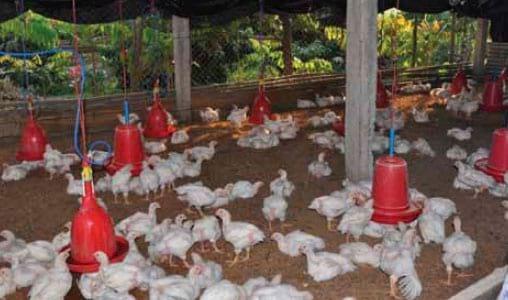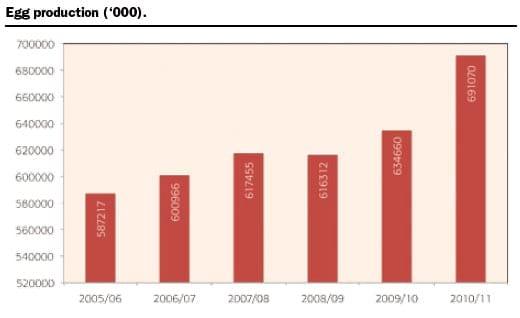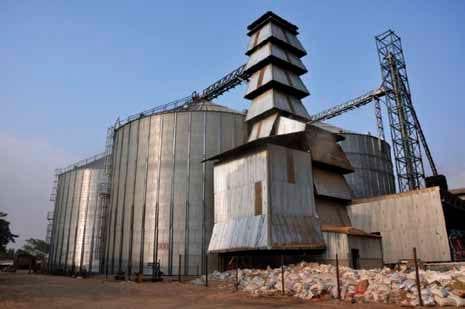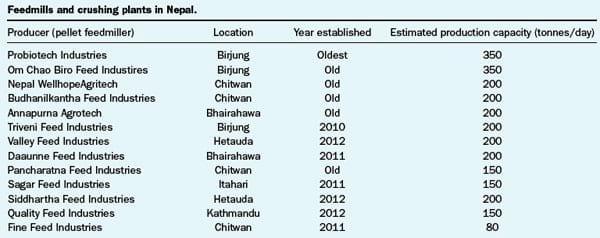Nepal Registers Consistent Growth in poultry industry
Nepal Registers Consistent Growth.
Published: December 14, 2012
By: Dr. Nischal Sharma (Probiotech Industries Pvt Ltd)
Located between India and China, Nepal is a small country with a total area of 147,181 sq km that is home to a 27 million population. The country's poultry industry has witnessed rapid commercialisation with an average growth rate of more than 10%/year over the last decade.

The poultry sector shares around 3.4% of the country's GDP. So far, it has invested over USD 334 million and created direct employment for over 70,000 people, and a livelihood for thousands of households.
The population of commercial broilers and layers in Nepal is estimated to be around 70 million and 7.5 million respectively.
There are approximately 75 largescale hatcheries, 115 feedmills, and over 500 layer and 1000 broiler farms in the country. Feed production/year stands at 600,000 tonnes.
Broiler and layer DOC production is around 1.4 million and 85,000 a week respectively. Around seven commercial broiler breeds and six layer breeds of chickens are reared commercially in Nepal.
Among broiler breeds, Cobb holds a 70% market share, followed by Hubbard, Marshall, Indian River Ross 308 and others. For layers, Hy- Line Brown has the biggest market share of 40% followed by Lohmann Brown (30%).
Cobb 500 broilers in Nepal. Cobb is the most famous broiler breed in Nepal, with about 70% market share.


Other layer breeds commercially reared in Nepal include H&N Brown Nick, Hisex Brown, BV 380, and Novogen Brown. Novogen Brown has recently been introduced in the country and is rapidly gaining market share.
Brown eggs are more popular in Nepal, so almost all the breeds are brown egg layers.
However, recently in eastern Nepal, a white layer breed BV 380 from Venkateshwara Hatcheries Group from India was introduced.
Nepal is fully dependent on imports for broiler and layer PS. They are generally imported from India, the Netherlands, Germany, Australia, France, UK, the Philippines, Malaysia, Belgium and Sri Lanka.
Expanding feed sector
With rapid growth in the poultry sector, the number of large-scale commercial pellet feedmills is increasing in Nepal.
Currently there are 13 pellet feedmills in the country with a combined capacity of around 2700 tonnes/day. Ten years ago, there was only a single pellet feedmill in Nepal with a capacity of 200 tonnes/ day. Founded in 2000, Probiotech Industries Pvt Ltd was the first pellet feedmiller in the country.
Around 90% of broiler farmers are now using commercial feeds while 60% of them are using pellet feeds.
Broiler farming has become popular in Nepal as initial investments are low, returns are quick and commercial feeds are easily accessible. Local consumers also prefer broiler meat.
Broiler farmers are rapidly moving towards pellet feeds as the performance justifies its use. The yearly average FCR from pellet feed in Nepal stands at around 2.2 compared to over 2.5 for mash feed.
Some commercial layer farms rear birds in deep litter. About 80% of layer farms in Nepal use home-mixed feed, but many are switching to commercial feed due to rising cost of raw materials.

Up to 80% of layer farmers, especially large farms with over 20,000 birds, still use mash feeds mixed on the farm. They buy local and imported raw material from India to make the feed.
The remainder 20% use commercial feeds - either in pellet form or steamed mash form. Steamed mash feed is only manufactured by Sumangal Feed Industries which has a capacity of 50 tonnes/day.
However, a growing number of layer farmers are switching from mash to pellet feed as the rising price of grains and oilmeals is making it uneconomical to procure a small amount of raw materials for on-farm mixing.
Soybean crushing plant of Pribiotech Industries Pvt Ltd. It is the first facility of its kind in Nepal and it is due to start rice polish crushing in October 2012.

New crushing plants
Two new solvent extraction plants opened in Nepal recently, bringing the country's oilseed crushing facilities to three with a combined capacity of 1.8 million tonnes/year. These new plants crush soybean and mustard seeds to produce deoiled cakes and crude oil for the local market. Previously there was only one facility of this kind, run by Probiotech Industries Pvt Ltd. For the first time in Nepal, the company will start rice polish crushing from October 2012. Additionally, there are two more pellet feedmills being built in Nepal as well. Each of them has a capacity of 150 tonnes/day and will be operational in 2013.

Broiler breeder (Marshall Breeder)

Feed ingredients
Nepal is self-sufficient in poultry products and poultry feeds, but it still relies heavily on raw materials such as grains and protein meals from India.
Maize is a major grain used as an energy source in feed. However, local supply accounts for only 40-50% of its total requirement. The rest is imported from India.
The whole industry's requirement for maize stands at around 300,000 tonnes/year. Nepal is 100% dependent on India for soybeans as its commercial cultivation in the country is non-existent. The whole industry requirement of soybeans is 100,000 tonnes/year.
There is only one soybean extraction plant in Nepal (Probiotech Industries Pvt Ltd), which supplies soybean meal (under trade name 'Soyamax') throughout the country. However, a large quantity of soybean meal is still imported from India.
Feed ingredients commonly used in commercial poultry feed in Nepal are composed of maize, wheat, pearl millet (Bajra), broken rice, deoiled rice bran (dorb), rice polish, soy deoiled cake, mustard deoiled cake, rapeseed extract, sunflower cake, maize gluten, meat and bone meal (mbm) and others.
Nepal is almost self sufficient in rice polish, but fully dependent on India for pearl millet, sunflower cake and meat and bone meal, as well as macro and micro ingredients such as vitamins, minerals and amino acids.
Potential
Per capita consumption of meat and eggs in Nepal is around 4.2kg and 48 pieces respectively. This is quite low compared with the average level of consumption in Asia at 9kg and 120 eggs.
This registers the scope for future growth of the poultry sector in Nepal.
The Nepali government recently introduced a Poultry Policy that targets to triple per capita consumption and availability of chicken and eggs in 15 years, placing poultry as a priority sector to encourage commercialisation.
Looking at the last decade and some recent developments, this sector is likely to grow in the near future with new investments in hatcheries, commercial farms and slaughterhouses.
However, political instability is a major concern and the sooner Nepal attains political stability, the faster the growth rate of the sector is likely to be.

This article was originally published in Asian Poultry Magazine, November/December 2012.
Related topics:
Authors:
Nimbus Nepal
Recommend
Comment
Share
19 de diciembre de 2012
Nice article about chicken product Dr Sharma. Indeed informative for all concerned. Thanks.
Recommend
Reply
Recommend
Reply
5 de noviembre de 2018
I would like o discuss about the Poultry Oil consumption with the producer of Poultry Feeds in Nepal.
Recommend
Reply
3 de septiembre de 2018
Great information but I would need to know feed product market scope as well.
Recommend
Reply
4 de mayo de 2018
Dr. sharma can you provide the present situation of feed production for diary cattle in nepal?
Recommend
Reply
1 de enero de 2015
To
Dr Sharma
Very nice information of poultry industries.Its very good for the industries.
Thanks
Recommend
Reply
Recommend
Reply
Jubilant Life Sciences Ltd.
15 de enero de 2013
Indeed a very informative article about chicken product. Thanks Dr.Sharma
Recommend
Reply
Vetsfarma
19 de diciembre de 2012
Dear Dr.Nischal Sharma,
Thank you very much for market information of Nepal. It is good to note that the industry is consistently growing and good changes are taking place.
Dr.R.D.Kalkar
Recommend
Reply
18 de diciembre de 2012
Dear author,
It is highly informative on present status. All hilly sector has good potential for chicken product consumption. Nepal is a very potential place for poultry as all developments are possible for chicken egg and meat production. In future some good changes are bound to come in poultry sector.
thank you.
Dr M. Rath, consultant in India
Recommend
Reply

Would you like to discuss another topic? Create a new post to engage with experts in the community.
Featured users in Poultry Industry

Shivaram Rao
Pilgrim´s
PhD Director Principal de Nutrición y Servicios Técnicos de Pilgrim’s Pride Corporation
United States
United States

Nelson Ward
dsm-Firmenich
Manager, New Business Development at DSM Nutritional Products Inc.
United States
United States












